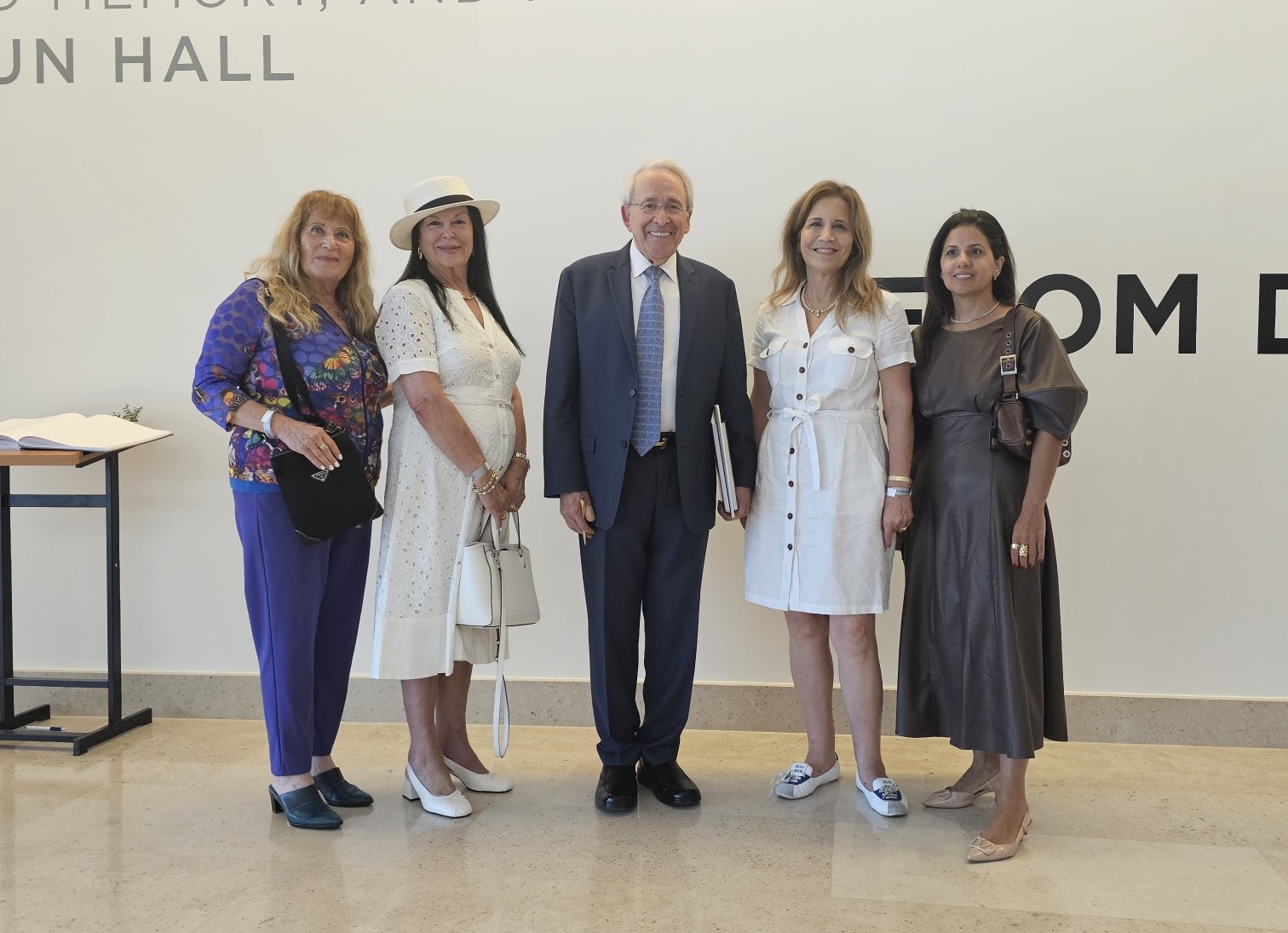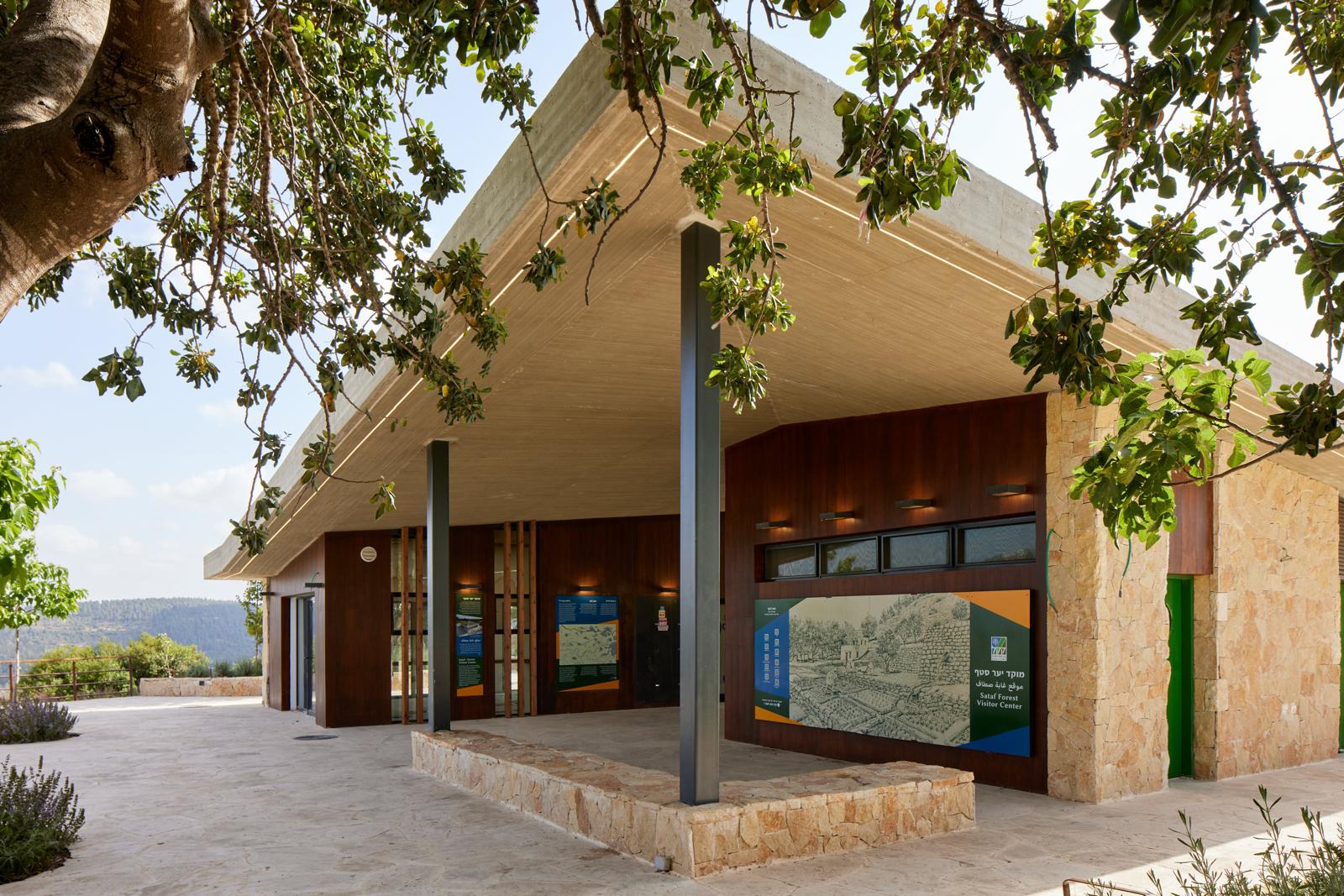Art & Culture
- Details
- Written by Silvia Golan & Stephen Abrahams

- Details
- Written by Silvia Golan & Stephen Abrahams

More Pics at Facebook Diplomacy Israel / Israel Diplo
- Details
- Written by Silvia Golan


- Details
- Written by Silvia Golan

KKL-JNF Opens New Visitor Center and Café at Sataf Forest in the Jerusalem Hills
Keren Kayemeth LeIsrael–Jewish National Fund (KKL-JNF) has inaugurated the new Sataf Visitor Center, a leading educational and tourism attraction in the Jerusalem Hills. The site features an advanced information center, a scenic observation deck, outdoor classrooms, and a boutique French-style bakery and patisserie, “The Sataf.”
The hub was designed to make the historical and agricultural heritage of Sataf accessible to visitors, while offering a unique leisure and culinary experience amid the breathtaking landscapes of the Jerusalem mountains.
Inside the center, visitors will find visually engaging information panels along the corridor leading to the observation deck. These panels present details about KKL-JNF’s work, the uniqueness of the site, its ancient agricultural terraces, traditional crops, and hiking trail maps. All information is provided in Hebrew, Arabic, and English. An open-air classroom overlooking the panoramic view allows groups to gather for briefings before heading out on the trails. The entire site is fully accessible to visitors with disabilities.
Adjacent to the center is “The Sataf,” an artisan bakery-patisserie offering French pastries, local wines, and countryside-inspired dishes. Guests can enjoy seating with spectacular views or take a picnic basket to-go. From the bakery, a short walking trail winds through natural woodland, ancient terraces, and orchards, leading to Ein Bikura, a historic spring where visitors can wade through clear waters and walk inside a carved tunnel dating back to the Roman period - an immersive experience blending nature, history, and refreshment.
The Sataf Forest Hub was built following principles of local and ecological architecture, incorporating sustainable elements such as an integrated solar roof connected to the national grid, a green roof for improved thermal insulation without irrigation, and underground drainage systems to manage runoff and enrich the soil. These features minimize environmental impact and ensure the hub blends naturally into the mountainous landscape.
The Sataf site, covering approximately 1,000 dunams (250 acres), preserves the traditional agricultural landscape of the Jerusalem Hills, including two natural springs - Ein Sataf and Ein Bikura. Since 1985, KKL-JNF has worked to restore ancient terraces and irrigation systems as part of an effort to conserve agricultural heritage and make it accessible to the public.
The site is also home to the “Bustanof” project, an initiative where individuals can cultivate small plots and become part of an active environmental community.
For decades, KKL-JNF Switzerland has been a committed partner in the preservation and development of the Sataf site. Their support, alongside that of other international donors, has been instrumental in bringing the new Visitor Center and forest hub to life—reflecting the deep connection between the global Jewish community and Israel’s natural and historical treasures.
In recent months, KKL-JNF’s Jerusalem region has faced major wildfires, which were managed professionally by the organization’s dedicated teams. KKL-JNF continues to monitor the area and prepare for the summer season to ensure visitors' safety and preserve the forest landscape.
KKL-JNF Chairwoman Ifat Ovadia-Luski, stated: “The new Sataf Forest Hub is a living example of the connection between nature, history, and community. We continue to preserve the heritage of the Jerusalem Hills while creating experiences that invite the public to explore, learn, and enjoy - all while protecting the environment and ensuring accessibility for all visitors.”
President of KKL-JNF Switzerland, Arthur Plotke, added: “Sataf is a magical place close to Jerusalem that holds a special place in our hearts. Thanks to the generosity of our supporters, this Visitor Center stands as a symbol of sustainable development and deep connection to the land. It invites every visitor to embark on a journey through history, nature, and community.”
Opening Hours: Sunday–Saturday, 7:00 AM–4:00 PM (extended hours coming soon)
Location: Sataf – Upper Parking Lot (Waze)
Kosher: All pastries are kosher-certified; the site is open on Shabbat
Accessibility: Fully accessible to the public
Photos Lior Avitan
- Details
- Written by Silvia Golan & Stephen Abrahams

An exhibition celebrating the enduring bond between the people of Israel and the natural world, as reflected through science, literature, music, and art curated by Tsila Hayun, Neta Asaf and Karine Shabtai at the National Library of Israel.









